Peroneal Tendonitis
Updated:
(Also known as Peroneal Tendinopathy, Peroneal Tendinitis, Peroneal Tendinosis)
N.B. Although recent research suggest that ‘peroneal tendinopathy’ is the more appropriate term to describe overuse injuries to the peroneal tendon, we will use the term ‘peroneal tendonitis’ in this document as it is more widely known.
What is peroneal tendonitis?
There are several muscles which lie on the outside of the lower leg and are collectively known as the peroneal muscles (figure 1). These originate from the outer lower leg bone (fibula) and travel down along the outside of the leg where they insert into various bones in the foot via the peroneal tendons (figure 1).
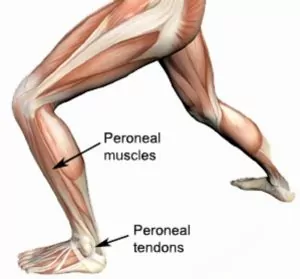
The peroneal muscles are responsible for moving the foot and ankle away from the midline of the body (eversion – figure 2). Whenever the peroneal muscles contract or are placed under stretch, tension is placed through the peroneal tendons. If this tension is excessive due to too much repetition or high force, damage to the peroneal tendons may occur. Peroneal tendonitis is a condition involving damage to one of the peroneal tendons with subsequent degeneration and often swelling of the affected tendon.

Causes of peroneal tendonitis
Peroneal tendonitis typically occurs following excessive walking or running (especially on slopes or uneven surfaces) or during sporting activities requiring frequent change of direction and or jumping such as dancing, basketball, football or volleyball.
Signs and symptoms of peroneal tendonitis
Patients with this condition typically experience pain at the outer aspect of the ankle, foot or lower leg during activities which place large amounts of stress on the peroneal tendons (or after these activities with rest, especially upon waking in the morning). These activities may include walking or running excessively (especially on slopes or on hard or uneven surfaces) or sporting activity requiring frequent change of direction and or jumping. The pain associated with peroneal tendonitis tends to be of gradual onset which progressively worsens over weeks or months with the continuation of aggravating activities. Patients with this condition may also experience pain on firmly touching the affected peroneal tendon (figure 1).
Diagnosis of peroneal tendonitis
A thorough subjective and objective examination from a physiotherapist is usually sufficient to diagnose peroneal tendonitis. Further investigations such as an Ultrasound or MRI scan may be required to assist diagnosis and assess the severity of the condition.
Treatment for peroneal tendonitis

Members Only ContentBecome a PhysioAdvisor Member to gain full access to this exclusive content. For more details see Become a Member. Already a member? Login Now
Contributing factors to the development of peroneal tendonitis
There are several factors which can predispose patients to developing this condition. These need to be assessed and corrected with direction from a physiotherapist and may include:
- muscle tightness (particularly the calf or peroneal muscles)
- muscle weakness
- joint stiffness (particularly of the foot and ankle)
- inappropriate or excessive training or activity
- inadequate recovery periods from sport or activity
- poor foot biomechanics
- inappropriate running technique
- inappropriate footwear
- inadequate warm up
- inadequate rehabilitation following a previous ankle or lower limb injury
- neural tightness
- muscle imbalances
- being overweight
Physiotherapy for peroneal tendonitis
Physiotherapy treatment for patients with this condition is vital to hasten the healing process, ensure an optimal outcome and reduce the likelihood of injury recurrence. Treatment may comprise:
- soft tissue massage
- electrotherapy (e.g. ultrasound)
- anti-inflammatory advice
- stretches
- joint mobilization
- dry needling
- ankle taping
- foot taping
- ankle bracing
- the use of crutches
- ice or heat treatment
- exercises to improve strength, flexibility and balance
- education
- activity modification advice
- biomechanical correction (e.g. the use of orthotics)
- footwear advice
- a gradual return to activity program
-
 Premium Strapping Tape 38mm (Victor)$16.00 – $295.00
Premium Strapping Tape 38mm (Victor)$16.00 – $295.00 -
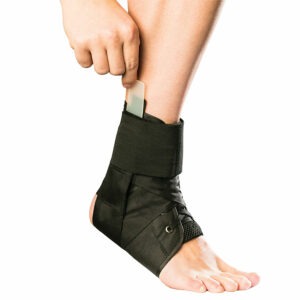 AllCare Ortho Total Ankle Brace (AOA19)$55.00
AllCare Ortho Total Ankle Brace (AOA19)$55.00 -
 AllCare Instant Cold Pack (15 x 25cm)$15.00
AllCare Instant Cold Pack (15 x 25cm)$15.00 -
 Forearm Crutches Adjustable – Standard Grip$59.00
Forearm Crutches Adjustable – Standard Grip$59.00
Prognosis of peroneal tendonitis
Most patients with this condition heal well with an appropriate physiotherapy program. This, however, can be a lengthy process and may take several months in patients who have had their condition for a long period of time. Minor cases of this condition that are identified and treated early can usually settle within a few weeks. Early physiotherapy treatment is vital to hasten recovery and ensure an optimal outcome.
Other Intervention for peroneal tendonitis
Despite appropriate physiotherapy management, a small percentage of patients with this condition do not improve adequately. When this occurs the treating physiotherapist or doctor can advise on the best course of management. This may involve further investigation such as an X-ray, Ultrasound, CT scan or MRI, corticosteroid injection, autologous blood injection, pharmaceutical intervention or a review by a specialist who can advise on any procedures that may be appropriate to improve the condition. A review with a podiatrist for the prescription of orthotics and appropriate footwear advice may also be indicated.
Exercises for peroneal tendonitis
The following exercises are commonly prescribed to patients with this condition. You should discuss the suitability of these exercises with your physiotherapist prior to beginning them. Generally, they should be performed 3 times daily and only provided they do not cause or increase symptoms.
Your physiotherapist can advise when it is appropriate to begin the initial exercises and eventually progress to the intermediate and advanced exercises. As a general rule, addition of exercises or progression to more advanced exercises should take place provided there is no increase in symptoms.
Initial Exercises
Foot and Ankle Up and Down
Move your foot and ankle up and down as far as possible and comfortable without pain (figure 3). Aim for no more than a mild to moderate stretch. Repeat 10 – 20 times provided there is no increase in symptoms.

Foot and Ankle In and Out
Move your foot and ankle in and out as far as possible and comfortable without pain (figure 4). Aim for no more than a mild to moderate stretch. Repeat 10 – 20 times provided there is no increase in symptoms.

Ankle Stretch with Towel
Begin this ankle stretch in long sitting with your leg to be stretched in front of you. Your knee and back should be straight and a towel or rigid band placed around your foot as demonstrated (figure 5). Using your foot, ankle and the towel, bring your toes towards your head until you feel a stretch in the back of your ankle, calf or leg. Hold for 5 seconds and repeat 10 times at a mild to moderate stretch provided the exercise is pain free.

Intermediate Exercises

Members Only ContentBecome a PhysioAdvisor Member to gain full access to this exclusive content. For more details see Become a Member. Already a member? Login Now
Advanced Exercises

Members Only ContentBecome a PhysioAdvisor Member to gain full access to this exclusive content. For more details see Become a Member. Already a member? Login Now
Rehabilitation Protocol for peroneal tendonitis

Members Only ContentBecome a PhysioAdvisor Member to gain full access to this exclusive content. For more details see Become a Member. Already a member? Login Now
 Find a Physio
Find a Physio
Find a physiotherapist in your local area who can treat this condition.
 Physiotherapy products for peroneal tendonitis
Physiotherapy products for peroneal tendonitis
Some of the most commonly recommended products by physiotherapists for patients with this condition include:
-
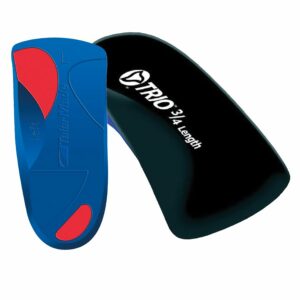 Talar Made TRIO Orthotics (3/4 length)
Talar Made TRIO Orthotics (3/4 length) -
 AllCare Ortho Total Ankle Brace (AOA19)
AllCare Ortho Total Ankle Brace (AOA19) -
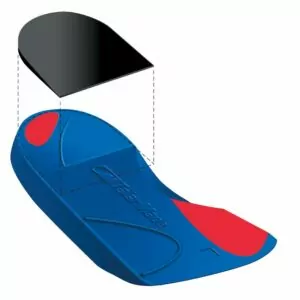 Heel Lifts (Elevators – Talar Made) (Pack of 5 Pairs)
Heel Lifts (Elevators – Talar Made) (Pack of 5 Pairs) -
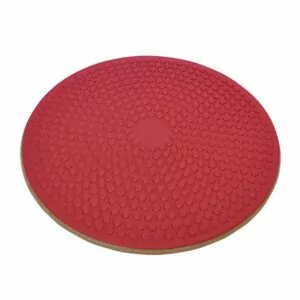 AllCare Wobble Board (Red – ACWOBRD)
AllCare Wobble Board (Red – ACWOBRD) -
 AllCare Band
AllCare Band -
 Premium Strapping Tape 38mm (Victor)
Premium Strapping Tape 38mm (Victor) -
 AllCare Tubing
AllCare Tubing -
 Fixomull Stretch 5cm x 10m
Fixomull Stretch 5cm x 10m -
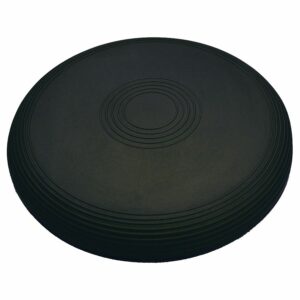 Lournet Stability Dura Disc
Lournet Stability Dura Disc -
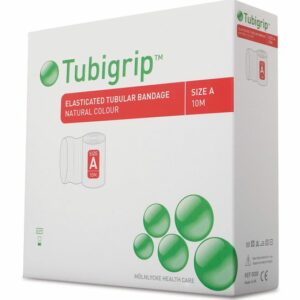 Tubigrip
Tubigrip -
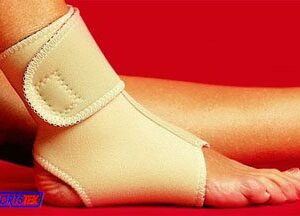 Thermoskin Heat Retaining Ankle Wrap
Thermoskin Heat Retaining Ankle Wrap
To purchase physiotherapy products for peroneal tendonitis click on one of the above links or visit the PhysioAdvisor Shop.
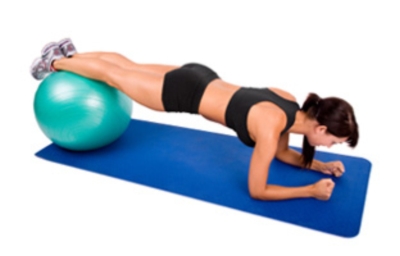 More Exercises
More Exercises
- Ankle Stretches.
- Ankle Strengthening Exercises.
- Balance Exercises.
- Leg Stretches.
- Leg Strengthening Exercises.
- Cardiovascular Exercise.
- Lower Body Machine Weights
- Massage Ball Exercises
- Foam Roller Exercises
- Core Stability Exercises
 Recommended Reading
Recommended Reading
- How to use Crutches
- Ice or Heat
- R.I.C.E. Regime.
- Do I Need Orthotics?
- Choosing a Shoe.
- Return to Running Program.
- Returning to Sport.
- Warming up and Cooling Down
- Ankle Taping.
- Foot Taping
- Injury Prevention
- Why is my injury not improving?
- Ankle Diagnosis Guide.
Become a PhysioAdvisor Member
-
 Individual Membership (12 Months)$59.95 for 1 year
Individual Membership (12 Months)$59.95 for 1 year -
 Individual Membership (3 Months)$39.95 for 3 months
Individual Membership (3 Months)$39.95 for 3 months -
 Individual Membership (Yearly)$49.95 / year
Individual Membership (Yearly)$49.95 / year -
 Individual Membership (Monthly)$15.95 / month
Individual Membership (Monthly)$15.95 / month

Link to this Page
If you would like to link to this article on your website, simply copy the code below and add it to your page:
<a href="https://physioadvisor.com.au/injuries/ankle/peroneal-tendonitis”>Peroneal Tendonitis – PhysioAdvisor.com</a><br/>Peroneal Tendonitis (also known as peroneal tendinopathy / peroneal tendinosis) causes, symptoms, diagnosis, treatment & exercises at PhysioAdvisor.
Return to the top of Peroneal Tendonitis.
